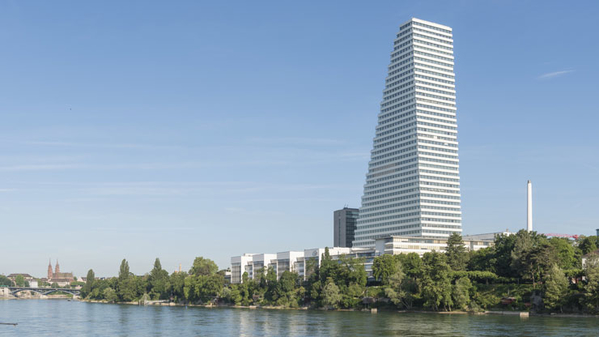Basel, Switzerland is an old city, and its center has many buildings, still in ordinary use, that date to the 12th and 13th centuries. And it has a spate of more recent, almost disruptive buildings, including not only the ultra-modern
Roche Tower and Basel Messeplatz, both opened in the past ten years, but also what might be called early ultra-modern, such as the 1926 St Anton church by Karl Moser.
But here and there around the city, there's a quieter revolution to be seen, with numbers of buildings that could either be called 'moderne' themselves, or which show architectural elements and decor that fit the emerging styles of the late 19th-century into early 20th, styles that were taken in differing directions by Gaudi in Catalonia, by Horta in Belgium, Guimard in France, and others.
Not surprising considering that Basel sits at the edge of France and Germany and has long been a center of trade. And that the period was one of growth and prosperity for Basel's merchants and manufacturers. And that no one really wants to be thought of as 'provincial.'
But many of the available building sites in the central core were not huge, and had solid not-going-away neighbors—the1907 Globus department store, above, and its 1950s neighbor share a blockfront with the huge red Gothic Town Hall— and the architects of the new buildings frequently made gestures, in form or detail, to the Gothic and Renaissance buildings around them, making for an interesting blend.
George G was the only one to correctly identify the One-Clue Mystery from a portion of the photo above.
Street-level storefronts in many buildings reflect today's retail styles; you often have to look up to see the real character of the building. That's true for many of Basel's oldest buildings as well: When you have so many of them, you either choose to preserve and adapt, or to live in a museum.
The building with the jaunty yellow sandal above a shoe store was built as a private mansion in the 16th century.
Two of Karl Moser's other Basel buildings illustrate two different paths to blending tradition with change. The Badische Bahnhof, a railway station, uses modernist details laid on a form that speaks Greek temple, while his Saint Paul church looks pure Romanesque at first glance, but is rich in nouveau carvings and forms.
Large and impressive buildings usually get the most of our attention, but the small streetcar station at Kannenfeldplatz shows a little love for the mundane.
Even on buildings that are not very interesting in themselves, there are ornamental touches to be found that are worth a look.
The sculptural elements above are on the Children's Hospital of the University of Basel; I was told, without confirmation, that they were kept when the 1890s building it replaced was demolished.



Comments (0)